
Why Raghu Rai’s photography matters today!?
May 06 2025
Why Today’s Generation Should Know Raghu Rai: A Master of Photography
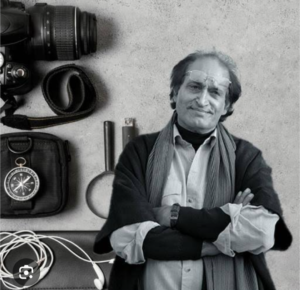
Raghu Rai, born in 1942, is a towering figure in Indian photography, often hailed as the “Father of Indian Photography.” His work, deeply rooted in the ethos of India, has earned him a place in the prestigious Magnum Photos, nominated by none other than Henri Cartier-Bresson. Rai’s black-and-white images, celebrated for their emotional depth and compositional brilliance, capture the essence of humanity, history, and culture. As a photojournalist, artist, and cultural chronicler, Rai’s legacy is a treasure trove of inspiration for today’s generation. Below, we explore why young photographers, creatives, and storytellers should know and learn from this living legend, with additional highlights uncovered through a deep exploration of his recent contributions and enduring impact.
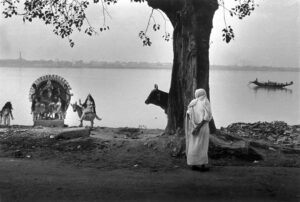
of these inhabitants live in a shantytown or slum.
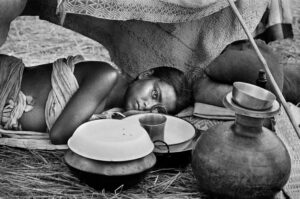
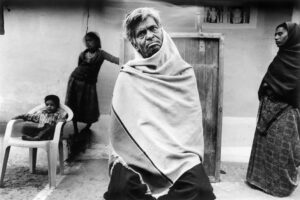
Gangaram had come to Bhopal to get treatment for leprosy at the Hamida Hospital. He was cured when the toxic gas hit the city. He is now, again, dependent on others for survival.

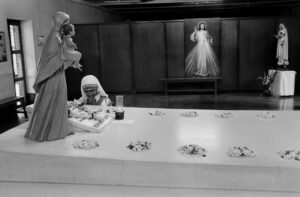

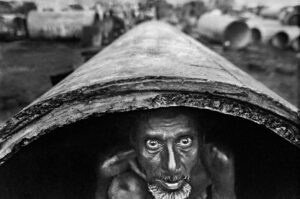
A Visual Historian of India’s Soul
Rai’s photography is a profound documentation of India’s multifaceted identity—its joys, struggles, traditions, and transformations. His images, from the Bangladesh Liberation War to everyday street scenes, preserve moments that define modern India. Recent exhibitions, like *A Thousand Lives: Photographs from 1965–2005* at the Kiran Nadar Museum of Art (February–April 2024), showcase 300–400 analog photographs, many displayed for the first time, revealing an India both familiar and distant. For a generation navigating a digital, globalized world, Rai’s work offers a grounding connection to cultural roots, reminding us of the power of visual storytelling to preserve history
2. Master of Black-and-White Artistry
Rai’s black-and-white photography is a testament to the power of monochrome to convey raw emotion and timelessness. His images, such as the poignant 1966 portrait of two gypsy girls in Kurukshetra or the chaotic energy of Delhi’s Chawri Bazar, use light, shadow, and composition to create lasting impact. Even as he transitioned to digital photography (notably with a Nikon D100 in 2003 and later Fuji GFX), Rai often converts color RAW files to black-and-white to maintain focus on the subject’s essence. In an Instagram-driven era of vibrant, fleeting images, Rai’s mastery teaches young photographers the value of simplicity and emotional depth over superficial aesthetics. Mumbai’s overcrowded trains to Varanasi’s spiritual ghats. His ability to balance universal appeal with local authenticity is a lesson for today’s creatives striving to tell culturally specific stories in a globalized world. Rai’s philosophy of “darshan”—seeing the totality of connections—offers a framework for creating work that resonates universally while staying rooted.
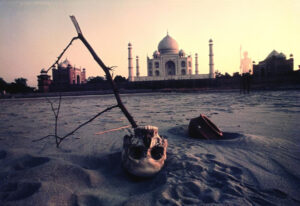
A Pioneer of Responsible Photojournalism
Rai revolutionized Indian photojournalism during his stints at The Statesman(1966–1976), Sunday (1977–1980), and India Today(1982–1991), where he produced trailblazing essays on social, political, and cultural themes. His coverage of the Bhopal gas tragedy (1984) and its aftermath, exhibited globally after 2004, raised awareness about corporate accountability and victims’ plight. For a generation accustomed to instant news, Rai’s commitment to immersive, empathetic storytelling underscores the role of photography in driving social change and preserving truth.
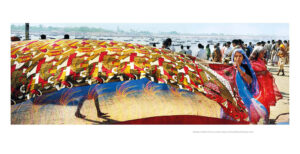

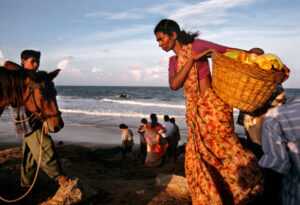
Women carrying raw coconuts, Kanyakumari Beach 1995
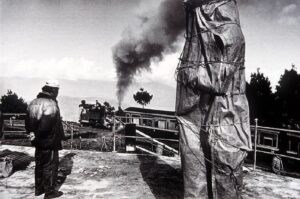
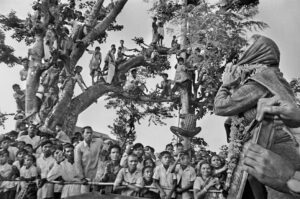

Dedication to Long-Term Storytelling
Rai’s long-term projects, such as his books on Mother Teresa, the Dalai Lama, and the Taj Mahal, reflect a depth of engagement rare in today’s fast-paced content culture. His recent work, including photographing the Shri Kashi Vishwanath Temple in Varanasi, shows his continued dedication to capturing India’s evolving spiritual and cultural landscape. This approach teaches young storytellers the importance of patience, intimacy, and authenticity—qualities that create lasting impact over viral.
A Mentor for Future Generations
Through the Raghu Rai Foundation for Art and Photography, Rai actively nurtures emerging talent. His 2022 publication with the foundation and recent exhibitions highlight his commitment to preserving India’s cultural heritage while mentoring young photographers. His advice, such as “Skills are never taught, they are acquired,” emphasizes self-discovery and vision over technical prowess. For today’s youth, Rai’s mentorship and resources offer a roadmap to professional growth and creative excellence.
A Voice Against Digital Superficiality
Rai has critiqued the rise of “unemotional instant photos” and indulgent selfies enabled by digital technology, lamenting their lack of “heartbeat.” He believes true photography captures the “here and now,” connecting the photographer’s heart with the moment. In an era of algorithm-driven content, Rai’s philosophy challenges young creatives to prioritize meaningful, heartfelt storytelling over chasing likes or predictable aesthetics.
.A Living Legend with Global Accolades
Rai’s accolades, including the Padma Shri (1972), Officier des Arts et des Lettres (2009), and the Académie des Beaux-Arts Photography Award – William Klein (2019), reflect his global influence. His recent recognition, such as the Lifetime Achievement Award from the International Centre of Photography (2018), underscores his enduring relevance. For young artists, Rai’s journey from a civil engineer to an internationally celebrated photographer is a testament to passion, persistence, and the pursuit of excellence.
Preserving Cultural Heritage
Rai’s work is a vital archive of India’s cultural heritage, documenting traditions, rituals, and everyday life across decades. His photographs of religious ceremonies, festivals, and ordinary people—from wrestlers in Delhi’s akharas to fishermen in Mumbai—preserve the vibrancy and diversity of Indian culture. A 2024 study in *ShodhKosh: Journal of Visual and Performing Arts* highlights how Rai’s imagery safeguards India’s legacy for future generations, making his work a crucial resource for cultural education.
Why Raghu Rai’s Photography
10. An Inspiration for Creative Authenticity
Rai’s approach, influenced by Indian philosophy and Zen Buddhism, emphasizes intuition and presence. He likens photography to music, where divine moments unfold when the photographer flows “like a river.” His workspace in New Delhi, filled with photobooks and prints, is a sanctuary where he “makes music out of images.” For a generation bombarded by digital noise, Rai’s call to create with heart and humility offers a path to authentic, impactful art.
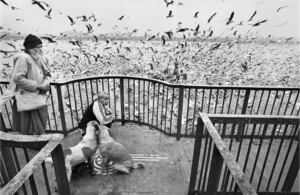
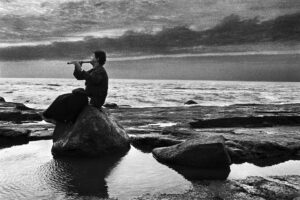
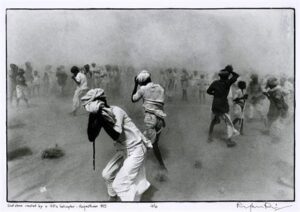
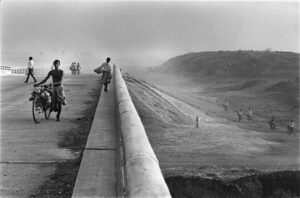
Why Rai Matters Today
Raghu Rai’s photography is a masterclass in capturing the extraordinary within the ordinary. His images, whether of a dust storm caused by a VIP helicopter or a quiet moment of prayer, are imbued with humanity and purpose. In a world of fleeting digital content, Rai’s analog-era ethos and digital-age adaptability teach young creatives to prioritize depth, empathy, and cultural resonance. His recent exhibitions, ongoing projects, and mentorship through the Raghu Rai Foundation ensure his influence endures, inspiring a new generation to tell stories that matter.
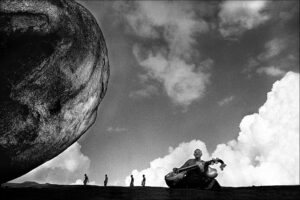

To dive into Rai’s work, visit the Raghu Rai Foundation (raghuraifoundation.org), explore his portfolio on Magnum Photos (magnumphotos.com), or attend exhibitions like those at PHOTOINK or the Kiran Nadar Museum of Art. Let his lens ignite your passion for storytelling that transcends time.
Article drafted by
CJ Rajkumar
Author/ Cinematographer
